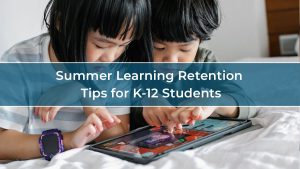Traditional physical classrooms have slowly been supplemented, or replaced in places, by virtual learning environments. Two main methods have emerged: asynchronous and synchronous online courses within this digital education frame. Each approach serves a unique advantage, and facing specific challenges becomes essential for educators, students, and their parents.
What are Asynchronous and Synchronous Courses?
In online education, learning occurs in two primary formats: asynchronous and synchronous. Grasping these can enable stakeholders to determine which mode fits their educational needs and lifestyle best.
Asynchronous Online Courses
Asynchronous courses are based on flexibility and independence; students log into course materials, join forums and discussions, and wrap up assignments. They follow their schedules as long as deadlines are met. This process is especially advantageous for those juggling studies with more commitments.
Main Characteristics of Asynchronous Learning:
- Flexibleness: Students tailor their learning pace and timings.
- Extended Access: Resources are always reachable, serving various learning speeds across time zones.
- Self-Focused Study: Promotes self-discipline with time control skills.
Synchronous Online Courses
Conversely, synchronous courses mimic traditional classroom vibes online, where classes happen in real-time. Students and instructors interact by immediately chatting and having live video meetups, which creates structured study moments.
Main Characteristics of Synchronous Learning:
- Live Chatter: Immediate talking points add clearness, acting like old-school classroom dynamics,
- Structured Study Halls: Scheduled class times keep students in a routine.
- Immediate Responses: Instructor and classmates provide feedback quickly, accelerating learning and adjustments.
Benefits of Asynchronous Learning
Asynchronous courses offer a lot of perks interesting to learners:
- Flexibility plus Convenience:
- Learners can access content anywhere, at any hour.
- Top choice for those balancing jobs, sports, activities, or other commitments,
- Boost in Time Handling:
- Students condition themselves to map out study end to meet projected timelines,
- Encourages high self-starter spirit and regulation.
- Custom-Paced Study:
- Persons could use more time on tough elements and glide over easier bits.
- Multiple material reviews fostering stronger recalls.
- Worldwide Reach:
- Removes geographic and timing walls.
- Aids international and asynchronous zone students.
Problems of Asynchronous Learning
Despite multiple profits, asynchronous learning faces hurdles:
- Less Social Interaction:
- The absence of real-time chats may cause learners to isolate.
- Not best for group environments.
- Delayed Responses:
- Instructor feedback takes time, which slows clarifications,
- It might deter learning momentum or student drive.
- Self-Stir Demands:
- Calls for hefty self-drive and synchronization power.
- Procrastination chance grows without solid timetables.
Benefits of Synchronous Learning
Real-time setups bring closeness to old-school classrooms:
- Direct Relations:
- Instant dialogs boost involvement and root Deep learning.
- Sparks active learning through on-the-spot questions and discussions.
- Regular Timelines:
- Set class timings to foster routines,
- Managing schedules around fixed courses is easier for students and teachers.
- Fast Feedback Loops and Tweaks:
- Educators give feedback straightaway,
- Adjustment on the fly, based on how well students grasp concepts.
Problems with Synchronous Learning
Yet, synchronous forms also carry drawbacks:
- Rigid Times:
- Set class periods might clash with personal lives,
- Troubles for academics sitting in varied time regions or personal commitments.
- Tech Reliance:
- Needs a reliable internet connection and tech gadgets.
- Technical glitches can break the school.
- Harder Access:
- Less giving for learners needing time to bend because of work or home.
- Sometimes, it excludes international students due to different time zones.
Rounding Off
Both asynchronous and synchronous online courses are vital in the diverse learning tastes and necessity spectrum. Asynchronous courses swing to unmatched freedoms and self-followed learning, while synchronous courses draw those wishing to live interactive and organized education timeframes.
Deciding between asynchronous and synchronous learning mostly depends on different learning styles, scheduling, tech access, and personal preferences. By recognizing the unique bonuses and obstacles each presents, educators can better tailor their courses, and students can make more informed decisions about their education.








